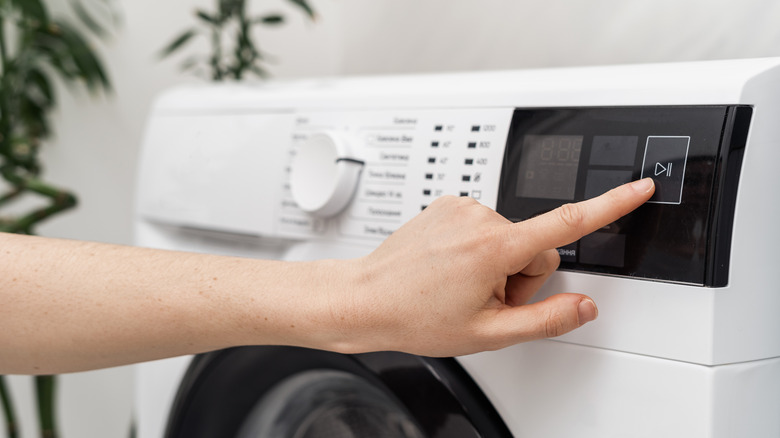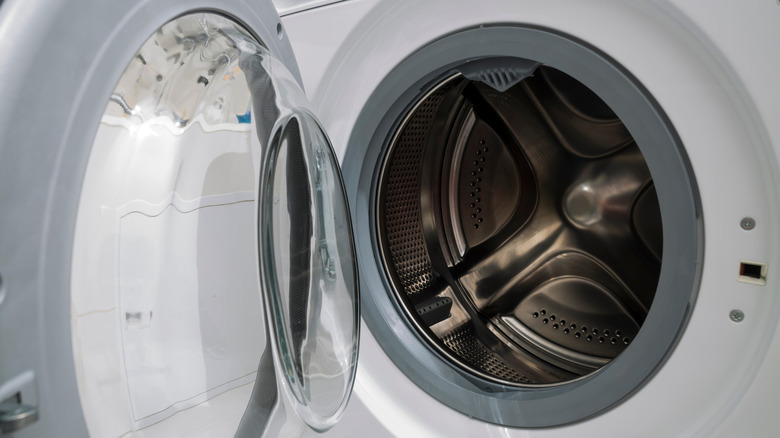Is Your Washer's Self-Clean Cycle The Answer To A Mold-Free Machine?
If you've opened your washer to discover a strong, musty scent, there may be mold growing inside. This can happen due to moisture getting trapped in small spaces of your machine, like the gasket, or because of excess residue from your detergents and fabric softeners. Thankfully, many modern washers have self-cleaning features, which run vigorously with hot water to loosen and wash away mold and dirt. By using the self-clean cycle every so often, your washer should remain free of mold and odors. If your washer is older and doesn't have a self-clean option, you can run long, hot cycles with bleach in an empty machine to mimic the effect.
In the dark environment of your washer, it's easy for mold to grow, but it could affect your health. Coming into contact with this fungus may cause headache, runny nose, sneezing, coughing, watery eyes, and respiratory symptoms, according to Rhode Island's Department of Health. This is why it's crucial to clean up and remove mold as soon as you notice it.
Using your washer's self clean cycle to fight mold
To run an effective self-clean cycle, your washing machine must be empty. Running this cycle with clothes inside could hurt or break your washer. You'll also want to keep in mind that these cleaning cycles can last between one to four hours, depending on the type of washer you have.
If there's water inside your machine from a stopped cycle, run it on spin only first to ensure that it's totally empty. Then, pour chlorine bleach directly into the detergent dispenser — or whatever self-cleaning solution comes recommended in your washer's user manual – filling it to the top. During a normal self-clean cycle, you may not need bleach, but it's best to use it to kill tany mold spores and mildew. Once the self-clean cycle has stopped, use a cloth to wipe any debris out of your machine and then run as many rinse cycles as necessary to remove any lingering mold. Leave all compartments inside the machine and the door open when you're finished to let everything dry.
Preventing mold in your washing machine
To keep your washer free of mold and allow your clothes to get as fresh as possible, run a self-clean cycle once every month to clean your washing machine. If you're doing many loads of laundry or washing something particularly dirty, you may want to use this feature more often. For those who find the mold regrowing quickly, you might be using too much laundry detergent or fabric softener. When an overabundance of soap is put into your machine, it will leave behind a residue that mold and mildew can feed on. If you think this may be the problem, try cutting down on the amount of detergent or substituting fabric softener for vinegar.
Taking your clothes out of the washer right after it's finished, wiping the rubber components dry with a cloth, and leaving the machine's door open will also help to prevent mold growth. If you have further mold issues, you may need to clean your washer's filter and detergent dispenser.


